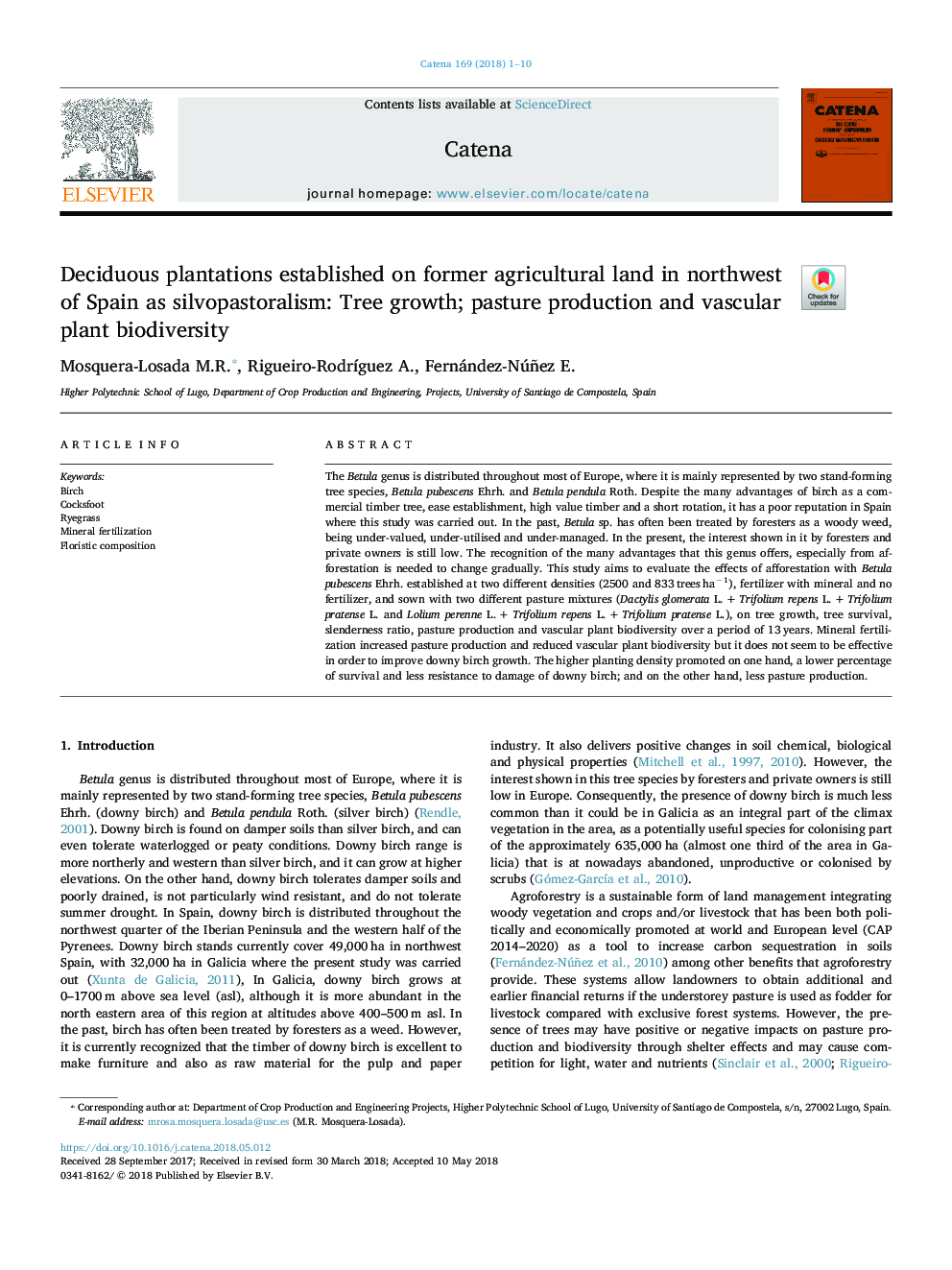| Article ID | Journal | Published Year | Pages | File Type |
|---|---|---|---|---|
| 8893403 | CATENA | 2018 | 10 Pages |
Abstract
The Betula genus is distributed throughout most of Europe, where it is mainly represented by two stand-forming tree species, Betula pubescens Ehrh. and Betula pendula Roth. Despite the many advantages of birch as a commercial timber tree, ease establishment, high value timber and a short rotation, it has a poor reputation in Spain where this study was carried out. In the past, Betula sp. has often been treated by foresters as a woody weed, being under-valued, under-utilised and under-managed. In the present, the interest shown in it by foresters and private owners is still low. The recognition of the many advantages that this genus offers, especially from afforestation is needed to change gradually. This study aims to evaluate the effects of afforestation with Betula pubescens Ehrh. established at two different densities (2500 and 833â¯treesâ¯haâ1), fertilizer with mineral and no fertilizer, and sown with two different pasture mixtures (Dactylis glomerata L.â¯+â¯Trifolium repens L.â¯+â¯Trifolium pratense L. and Lolium perenne L.â¯+â¯Trifolium repens L.â¯+â¯Trifolium pratense L.), on tree growth, tree survival, slenderness ratio, pasture production and vascular plant biodiversity over a period of 13â¯years. Mineral fertilization increased pasture production and reduced vascular plant biodiversity but it does not seem to be effective in order to improve downy birch growth. The higher planting density promoted on one hand, a lower percentage of survival and less resistance to damage of downy birch; and on the other hand, less pasture production.
Related Topics
Physical Sciences and Engineering
Earth and Planetary Sciences
Earth-Surface Processes
Authors
Mosquera-Losada M.R., Rigueiro-RodrÃguez A., Fernández-Núñez E.,
